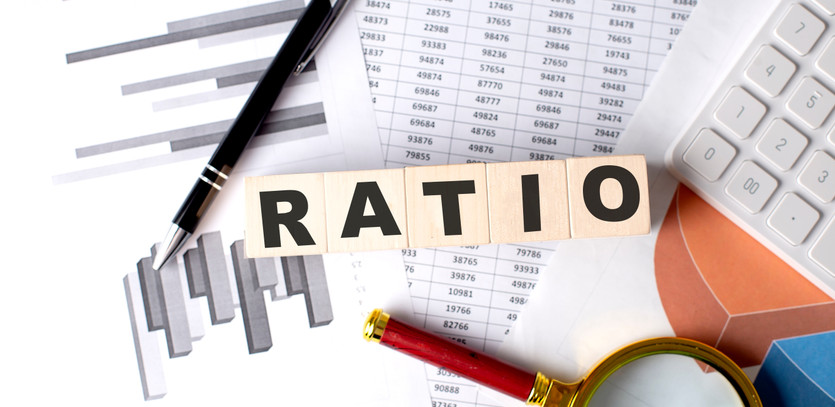The Sharpe ratio, a remarkable creation of its inventor William F. Sharpe, stands as a comprehensive tool that enables investors to meticulously balance the potential risks and rewards of an investment. It breathes life into numbers, allowing for a more strategic and informed decision-making process that can greatly enhance investment profitability while mitigating unwarranted risks.
Understanding the essence of the Sharpe ratio necessitates delving into the fundamentals of risk management, return on investment, and the broader financial market dynamics. It's about understanding that higher rewards are often tied to higher risks, and the art of investment is to strike that perfect equilibrium where the reward justifies the risk.
With its robust mathematical formula, the Sharpe ratio simplifies this complex equation. It's not just about measuring risk and return, but rather about bringing them into a single unified framework that makes comparisons and decisions more actionable. The Sharpe ratio, therefore, is more than a measure—it's a key decision-making tool for investors worldwide.
Key Insights into the Sharpe Ratio
The heart of the Sharpe ratio lies in its unique ability to juxtapose an investment's gains against its inherent risk. The approach involves:
- Isolating the risk-free rate of return from the expected rate of return.
- The subtraction result is then divided by the standard deviation, often referred to as the asset's "volatility".
- This process, in essence, quantifies the degree of risk associated with each unit of return.
The Sharpe ratio saw the light of day in the mid-1960s, thanks to its namesake, William F. Sharpe. His trailblazing work in investment analysis and risk management has carved the path for modern financial risk assessment.
- The Sharpe ratio is widely recognized and used as a fundamental risk-to-reward indicator in finance.
- It provides a normalized measure that facilitates the comparison of different investment opportunities, each with its own unique risk and return profiles.
Through the lens of the Sharpe ratio, the complex world of investments becomes more structured and predictable. This, in turn, equips investors with actionable insights to optimize their portfolio according to their risk tolerance and return objectives.
The Sharpe Ratio: An In-Depth Explanation and Practical Examples
The Sharpe ratio's true brilliance shines through its capacity to calculate the average risk-adjusted return per unit of volatility. This unique ability permits investors to contrast and compare the risk associated with each percentage point of return across different investments. This invaluable knowledge can prove instrumental in managing their risk exposure more effectively. After all, the ultimate goal is to reap as high a return as possible for the lowest level of risk.
Let's put this into perspective with an example. Consider two investment managers, one producing a portfolio return of 10%, while the other boasts a return of 14%. On the surface, the investment manager generating the 14% return would appear to have the upper hand.
However, things start to get interesting when we bring the Sharpe ratio into the equation. Assume that the Sharpe ratios for the first and second managers are 1.8 and 0.7, respectively. These numbers indicate that the second manager is shouldering more risk to generate those extra returns, signaling a potentially higher risk of losses. Therefore, the first manager's investment might be the better choice for those who prioritize stability and risk reduction.
This example underscores the fundamental essence of the Sharpe ratio – it’s not about the absolute return, but the return relative to the risk. Every investor must consider their risk tolerance and the risk-adjusted return to determine whether an investment's potential returns justify the risk involved. At the end of the day, the higher the Sharpe ratio, the more returns an investment offers relative to the risks involved.
The Sharpe Ratio: Operational Insights
In action, the Sharpe ratio harnesses the concept of the risk-free rate of return, typically represented by a Treasury security, backed by the solid reassurance of the U.S. government. Let's take an instance where a Treasury bond boasts a yield of 4%. This yield becomes the benchmark or the risk-free rate of return in the Sharpe ratio calculation.
Now, to justify its associated risks, an investment must be capable of generating returns surpassing this risk-free rate of 4%. The extent of the fluctuations in the price of an investment is its "volatility". The combination of the risk-free rate of return and volatility forms the cornerstone of the Sharpe ratio, helping investors to assess whether an investment's potential returns outweigh its risks.
This dual integration not only quantifies the inherent risks but also sets a clear benchmark for the returns required to compensate for those risks. Consequently, the Sharpe ratio empowers investors to make an informed decision. By tying together the different elements of investment, the Sharpe ratio equips investors with the knowledge needed to gauge the true worth of an investment. This allows them to mitigate risk while maximizing the potential for profit. It's a strategy that is not just about understanding the numbers, but about understanding what the numbers truly mean.
The Math Behind the Sharpe Ratio: A Comprehensive Guide
Crunching the numbers to determine the Sharpe ratio involves a straightforward formula, incorporating both the expected and risk-free rate of return, as well as volatility. Here's how it works:
- Begin by subtracting the risk-free rate of return (for instance, a Treasury bond return) from the expected rate of return on the investment.
- Take this result and divide it by the standard deviation of the investment's annual rate of return, effectively measuring its volatility.
This numerical representation of the Sharpe ratio provides a quantifiable and concrete reflection of the relationship between an investment's potential returns and the risks taken to achieve them. It's a reliable mathematical mechanism for investors to gauge the effectiveness of their investments, ensuring they can confidently stride forward in their financial journey.
Delving Deeper: Risk-Adjusted Returns Explained
To truly grasp the Sharpe ratio's functionality, it's essential to delve into the concepts of volatility measurements and risk-adjusted returns.
- The beta coefficient is typically used to measure risk. This coefficient measures a stock or fund's volatility against a benchmark, such as the S&P 500 index. For instance, if a stock has a beta of 1.1, it implies a volatility level 10% greater than the S&P 500 index.
- The beta coefficient can also be used to determine an investment’s alpha—a risk-adjusted return that accounts for risk. The alpha is calculated by subtracting an equity’s expected return (based on its beta coefficient and the risk-free rate) from its total return.
In this realm of numbers and percentages, it's crucial to remember that investments with a higher beta must yield a higher total return to achieve a positive alpha. Thus, more secure stocks might generate higher risk-adjusted returns, even with lower total returns, as they pose less risk of loss over the long haul.
These foundational principles of risk and return are critical to mastering the Sharpe ratio's use and, more importantly, to effectively navigating the investment landscape.
A Critical Lens: Evaluating Risk in Investments
The prudent investor understands that venturing into the world of investments requires a clear, analytical evaluation of risk-adjusted returns. Deciding where to allocate your money without an in-depth risk assessment can result in substantial losses over the long run.
While beta and alpha are valuable tools for risk evaluation, the Sharpe ratio brings an added dimension, incorporating absolute rather than relative measures of risk. These metrics provide a more holistic view of the potential dangers and opportunities, enabling investors to choose the most promising investment opportunities with greater precision and confidence.
When deciding on your investments, make sure to:
- Utilize the Sharpe ratio to get a clear understanding of the investment's risk-to-reward profile.
- Compare similar investments to ensure the effectiveness of the Sharpe ratio analysis.
- Understand that a higher Sharpe ratio might indicate a more optimal risk-to-reward profile, but it could also entail larger risks.
Remember, risk assessment isn't just about evaluating potential losses; it's also about leveraging risk to maximize potential gains. Therefore, the Sharpe ratio serves as an essential tool for investors to balance the scales of risk and reward.





